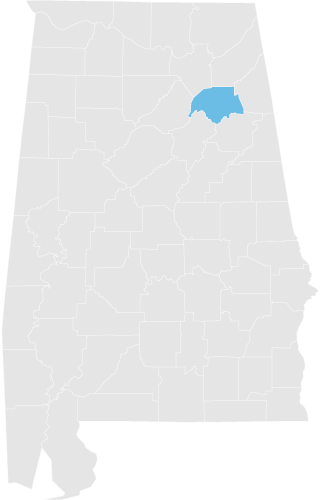What is an MS4?
MS4 is short for, “Municipal Separate Storm Sewer System”, where the word “Municipal” refers to a unit of local government like a borough or a township, but may also refer to an organization responsible for the administration of a developed area. And the number 4 refers to the four words that start with the letter “S”; “Separate,” “Storm,” “Sewer,” “System.”
A separate storm sewer system is a collection of structures, including retention basins, ditches, roadside inlets and underground pipes, designed to gather stormwater from built-up areas and discharge it, without treatment, into local streams and rivers. It’s called a separate system because it’s not connected to the sanitary sewer system which drains waste water from inside a home to a sewage treatment facility or a private septic system. Some communities do have combined storm and sanitary sewers. The areas served by these “combined systems” are not covered by the MS4 program.
Many rural developments have stormwater management structures, but only communities that the United States Census Bureau classifies as “Urbanized Areas,” based on population density, are required to become part of the MS4 program. Urbanized Areas contain commercial and residential development which produces large amounts of stormwater runoff. Large institutions, like college campuses, hospital complexes, and shopping centers are also part of the MS4 program because they also contain the type of dense development that produces concentrated stormwater flows.
The program is managed by the Alabama Department of Environmental Management or ADEM, which fulfills this role to comply with federal mandates under the Clean Water Act. The Environmental Protection Agency (EPA) has an oversight role because they are the federal agency charged with implementing the Clean Water Act.
The authorization that MS4 communities get from ADEM to legally discharge stormwater into local stream and rivers is called an “NPDES” permit which stands for National Pollution Discharge Elimination System. The word “National” references the connection with the Federal Clean Water Act, and the word “Discharge” refers to the fact that separate storm sewer systems eventually release stormwater into local creeks, rivers, and lakes, untreated. These particular NPDES permits are also commonly called, “MS4 Permits” or “Stormwater Permits.” To meet the terms of the NPDES Permit, communities need to develop what’s called a “Stormwater Management Program Plan” (SWMPP).
Etowah County, along with the local municipalities of Attalla, Gadsden, Hokes Bluff, Rainbow City, and Southside make up the discharge stormwater, most of which eventually makes its way into the Coosa River.
Because every MS4 faces unique stormwater challenges each management plan is unique. But every SWMPP includes the same six focus areas that the Environmental Protection Agency considers essential for success, including
- Public Education and Outreach
- Public Participation and Involvement
- Illicit Discharge Detection and Elimination
- Construction Site Erosion Control
- Post Construction Stormwater Management
- Pollution Prevention and Good Housekeeping
Public Education and Outreach
Because stormwater originates from all corners of the community, including the neighborhoods where people live and work, increasing public stormwater awareness is considered very important. To achieve this goal, we need to inform residents about what stormwater is, why it requires management, and things they can do to make a difference.
Public Participation and Involvement
Our goal is to involve the public in stormwater related activities; including taking actions that improve stormwater at home, work and in the community. Each year, there are many opportunities for the public to become involved in our watershed such as Renew Our Rivers, The Etowah County Water Festival and The Great American Cleanup. The Natural Resources Conservation Service and the Alabama Cooperative Extension System also assist through programs, workshops and seminars that provide opportunities for the public to participate for the betterment of their community both locally and statewide.
Illicit Discharge Detection and Elimination
One of the keys to clean water involves keeping pollutants out of the separate storm sewer systems. This happens when things other than stormwater get dumped into a storm sewer inlet, and also when storm sewers and sanitary sewers are illegally connected. Examples of illicit substances include failing septic systems, illegally running lines from sinks and washing machines directly onto the ground or into a ditch or directly into a creek, illegal dumping of garbage, improper disposal of automobile and equipment oil among other things.
Construction Site Erosion Control
Poorly managed construction sites can be a major source of polluted stormwater so MS4s are required to reduce this risk. Activities include procedures to make sure erosion and sediment control practices are installed correctly and maintained as long as needed to prevent it leaving the site and causing damage to waterways. Also, encouraging developers and builders to install low impact development practices such as setting aside sensitive lands, like woods and stream buffers.
Post Construction Stormwater Management
The goal is making sure that new developments as well as the drainage features that support them are properly implemented and maintained after construction.
- 2015-2016 Gadsden-Etowah MS4 Stormwater Management report
- 2016-2017 Annual Stormwater Report
- 2017-2018 Annual Stormwater Report
- 2018-2019 Annual Stormwater Report
- 2019-2020 Annual Stormwater Report
- 2020-2021 Annual Stormwater Report
- 2021-2022 Annual Stormwater Report
- 2022-2023 Annual Stormwater Report
- Etowah County MS4 2017 Storm Water Management Program Plan
- Etowah County MS4 2022 Storm Water Management Program Plan

